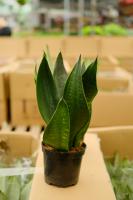How to Water Proof a Planter
Planters are a beautiful addition to any garden or indoor space. However, they can also be prone to water damage and decay over time. This is why it is essential to waterproof your planter to ensure it stays beautiful and functional for years to come. In this article, we will discuss different methods of waterproofing your planter and how to maintain it properly.
Method 1: Using a Waterproofing Sealer
One of the most common methods of waterproofing a planter is by using a waterproofing sealer. This is a type of penetrating sealer that seeps into the pores of the planter to create a barrier, preventing water from penetrating the surface. Here’s how to do it:
First, clean the planter thoroughly by removing any dirt or debris. Use a scrub brush and mild soap to clean the surface.
Allow the planter to dry completely before proceeding to the next step.
Apply the waterproofing sealer using a brush or sprayer. Follow the manufacturer’s instructions and apply a thin coat evenly across the surface.
Allow the sealer to dry according to the manufacturer’s instructions. This may take several hours, so be patient.
Repeat the process of applying the sealer and letting it dry for two to three coats for added protection.
It’s important to note that this method works best on porous surfaces, such as unglazed terracotta or clay. However, it may not be as effective on glazed or metal planters.
Method 2: Using a Liner
Another way to waterproof your planter is by using a liner. This method is ideal for glazed or metal planters that are not as porous as terracotta or clay. Here’s how to do it:
First, measure the planter’s dimensions and cut a liner to fit inside.
Place the liner inside the planter and smooth out any creases or wrinkles.
Trim any excess liner from the edges.
Fill the planter with soil and plants as usual.
This method is easy and effective, but keep in mind that liners can break down over time and may need to be replaced periodically.
Method 3: Using Epoxy
For more durable planters made of concrete or stone, epoxy is an effective waterproofing option. Here’s how to do it:
First, clean the planter thoroughly with soap and water to remove any dirt or debris. Allow it to dry completely.
Prepare the epoxy according to the manufacturer’s instructions. This usually involves mixing two parts of the epoxy together.
Apply the epoxy to the planter’s surface with a brush, working in small sections to ensure proper coverage.
Allow the epoxy to dry completely, which may take 24-48 hours depending on the manufacturer’s instructions.
Apply a second coat of epoxy for added protection and allow it to dry fully.
Be aware that epoxy can be expensive and difficult to work with, so this method is best reserved for more significant planters like concrete or stone.
Maintaining Your Water Proof Planter
After waterproofing your planter, it’s important to maintain it properly to extend its lifespan. Here are some tips to help you do that:
Keep your planter clean by wiping down the surface regularly with a damp cloth.
Inspect your planter for cracks or weak spots, and address them immediately with the appropriate repair method.
Protect your planter from extreme temperatures or harsh weather conditions. If you live in a harsh climate, consider bringing your planters indoors during the winter months.
Finally, choose the right plants for your planter. Avoid planting species that have high water needs or require frequent watering, as this can cause damage to your planter over time.
In conclusion, waterproofing your planter is essential to ensure that it can withstand the elements and remain a beautiful and functional addition to your space for years to come. Try out one of these methods to keep your planter looking its best for a long time.

 how many times do yo...
how many times do yo... how many planted tre...
how many planted tre... how many pine trees ...
how many pine trees ... how many pecan trees...
how many pecan trees... how many plants comp...
how many plants comp... how many plants can ...
how many plants can ... how many plants and ...
how many plants and ... how many pepper plan...
how many pepper plan...






























